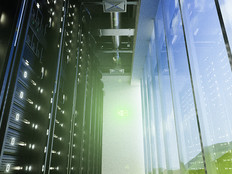Energy Management Enablers
Last February, the U.S. Department of Energy and the Environmental Protection Agency jointly announced an agreement on energy efficiency measurement, metrics and reporting conventions for data center facilities. Designed to rein in rising energy consumption in both federal and commercial data centers, the agreement recommends how data centers should measure energy usage, where to take those measurements and how frequently, according to DOE officials.
One of the agreement’s recommendations states that organizations calculating their Power Usage Effectiveness (PUE), which the DOE says is the preferred energy-efficiency metric for data centers, should measure their IT energy consumption at the output of the UPS, typically by using software that monitors energy at the device.
“Some UPS systems have built-in capability to measure energy output [kWh]. Others may have the capability to provide power readings [kW], which facility operators can then use to calculate the energy output,” explains Jen Stutsman, deputy press secretary with the DOE.
As the movement towards energy efficiency in the data center evolves, IT departments are finding tools that give them more granular control over energy use and related costs. Power management software for UPS systems and power distribution units from companies such as APC, Eaton, Raritan and Tripp Lite can determine how much energy is being consumed by attached devices, as well as provide remote monitoring of system health and environmental conditions.
Using power management tools for monitoring data center equipment can help an organization’s overall move toward energy efficiency, says Greg Schulz, founder of the Server and StorageIO Group consulting firm.
Schulz dubs the typical lack of attention paid to such tools as the “green gap.” “When I mention green, IT professionals think reduced carbon footprint; they don’t equate it to boosting productivity or leveraging power management,” he says. “As people realize there’s more to green than just CO2 and recycling, that it’s also about economic activity and driving productivity, they realize they’ve been missing out on opportunities.”
Part of the reason many IT organizations don’t focus on gleaning power-usage information from UPS systems and PDUs is because those devices tend to be controlled by the facilities group, Schulz adds.
“What’s required is awareness and coming together; if I’m delivering a kilowatt to a cabinet, I need to know what the effect is,” he says. “Everything is associated. If I’m responsible for plugging in a rack, I need to know there’s an energy cost to it, and it’s having an impact.”
PDU and UPS software also helps IT departments with the general management of these devices, such as remotely monitoring UPS systems for status and environmental conditions without having to physically check on them.
57%
The percentage of IT managers who know what portion of their IT budget is spent on energy, up from 50% in 2009
At Andrews Air Force Base in Maryland, the 89th Communications Group provides systems support for the 89th Airlift Wing and its partner units. When the group’s 14-year-old UPS had reached the end of its life, it chose a pair of Eaton parallel-redundant UPS systems that can be managed by Eaton’s Intelligent Power Software Suite. Because of the redundant design of the UPS systems, critical loads can be maintained even if there’s an equipment failure, according to the “Powering the U.S. Air Force: Andrews AFB” case study on the manufacturer’s website. The two devices can work in tandem without having to be wired together, therefore eliminating a single point of failure.
Switching to Eaton’s offerings saved the Air Force group nearly $60,000 per year on maintenance costs alone, and the automated management of these systems is reducing manpower costs by roughly $28,000 per year, according to the report.






